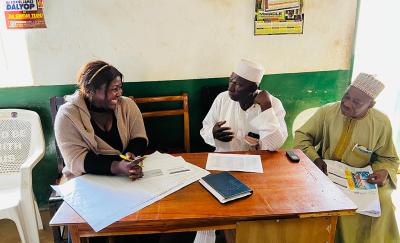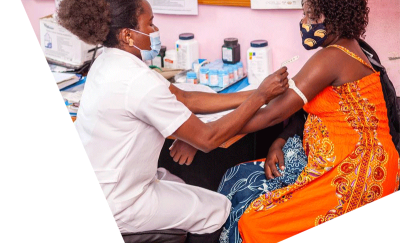Regulatory and Policy Systems. Strengthened regulatory systems for responsible antimicrobial use are critical to ensure laws governing antibiotic use in healthcare, agriculture, and environmental sectors are enforced. Subnational governments must be held accountable for operationalizing national strategies, implementing and monitoring adherence to policies that prevent the sale of over-the-counter antibiotics and control their use in animal farming. Health systems should align with international AMR frameworks, such as the World Health Organization’s Global Action Plan on AMR, to standardize approaches and collaborate across borders.
Supply Chain and Access Systems. Strengthening supply chain management is critical to ensuring consistent access to quality-assured antibiotics, preventing the circulation of substandard or counterfeit drugs, even in the context of health system shocks and stressors. Health systems must prioritize equitable access to diagnostics, treatments, and vaccines that reduce the need for antibiotics and strengthen early detection and prevention of the spread of resistant pathogens.
Workforce and Capacity Building. Continuous education for healthcare professionals on responsible antibiotic use, the risks of resistance, and effective stewardship practices is essential. A trained workforce is key to implementing AMR strategies at all levels of care. Veterinarians and agricultural workers form critical pieces of this integrated health workforce and must also be integrated into national workforce development, supportive supervision and continuing education strategies to ensure proper antibiotic use and biosecurity measures to prevent resistance from emerging in livestock that can affect human health.
Community Engagement Systems. Strengthening systems that engage communities in understanding AMR is essential for promoting responsible antibiotic use. Community health workers, and in a growing number of countries community animal health workers, can play a critical role in raising awareness and changing behaviors that contribute to AMR. Strong risk communications and community engagement approaches can shift public behavior toward antibiotic use, adherence, infection prevention measures, vaccination and strengthen identification and referral of new cases of AMR.
Addressing antimicrobial resistance requires a holistic, integrated approach that strengthens health systems (both public and private) across all levels. AMR is a complex issue that impacts human health, animal health, and the environment. Tackling it effectively necessitates robust, coordinated efforts that include not only healthcare interventions but also broader systemic improvements. Strengthening healthcare delivery, surveillance, regulatory frameworks, supply chains, and workforce capacity addresses AMR from multiple angles. Only by reinforcing these interconnected systems and addressing them within human, animal and environmental sectors can we build a resilient health infrastructure capable of addressing the complex and multi-sectoral challenges posed by AMR to sustain progress in reducing its global threat.
Navigating Tomorrow's Challenges: Advancing Health Security with Digital Innovation
From cross-border data sharing platforms to AI-driven predictive analytics, the world has an unprecedented opportunity to leverage digital innovation in health security solutions to detect outbreaks early, track disease spread, and coordinate effective interventions on a global scale.









